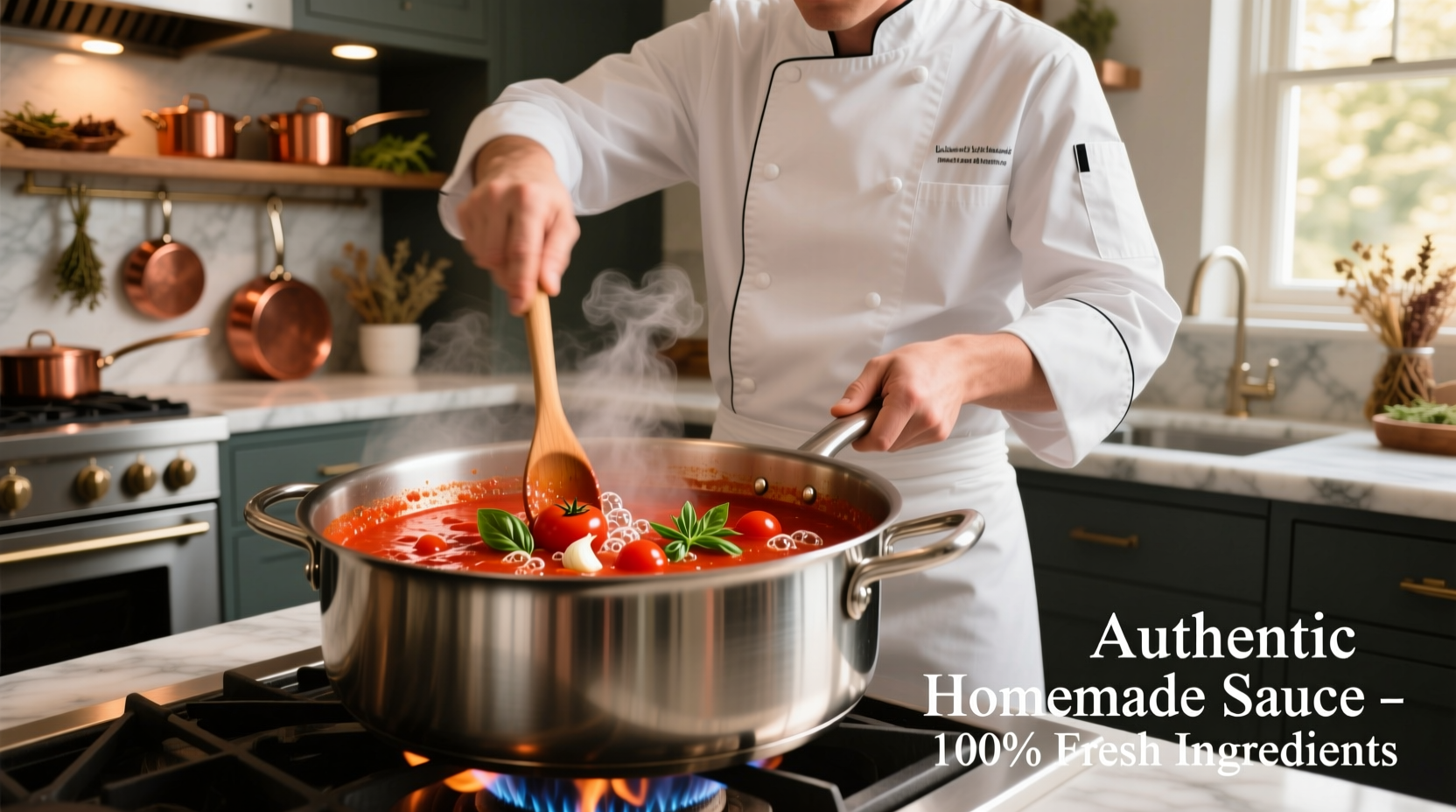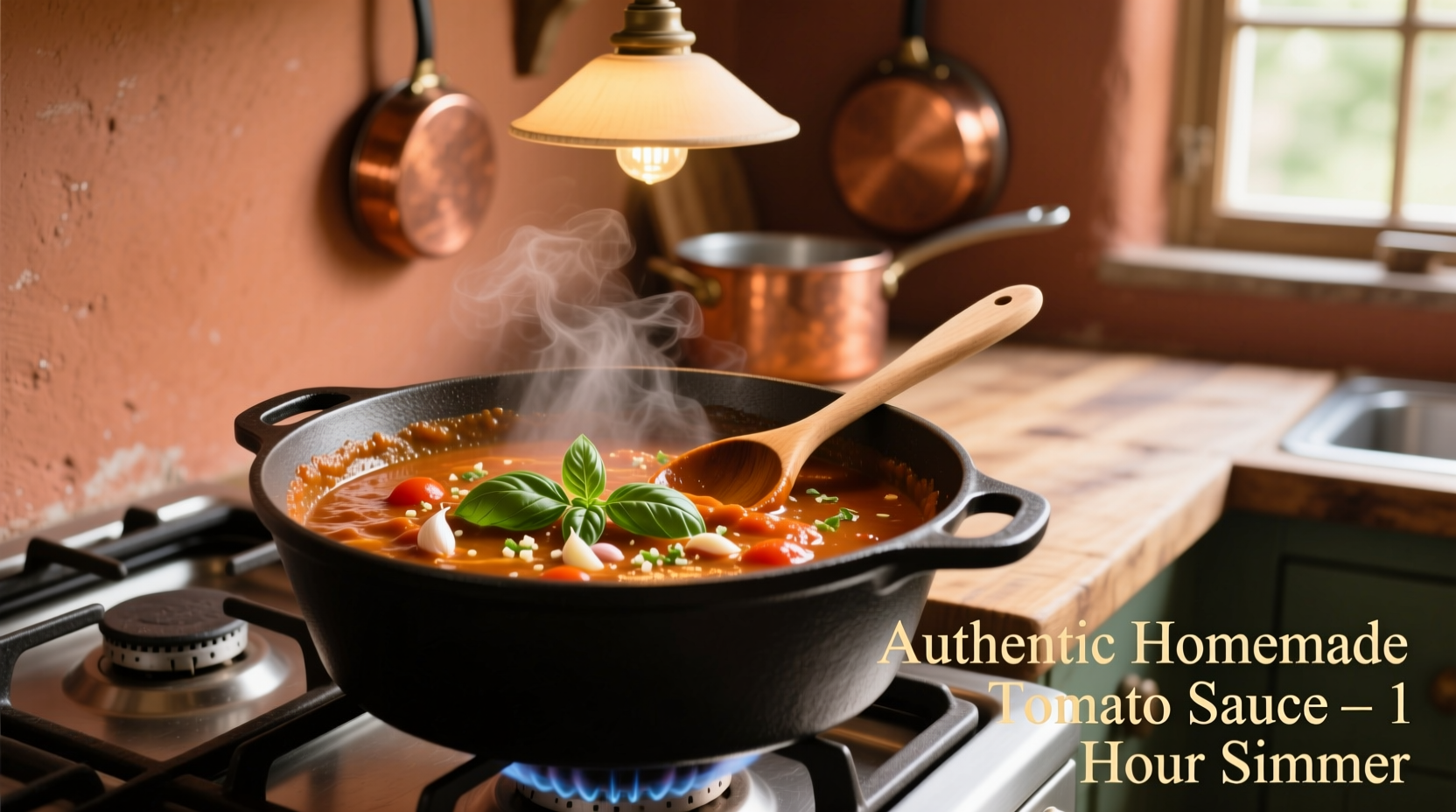Transform canned tomato paste into rich, flavorful tomato sauce in just 20 minutes with this simple method: combine 1 part tomato paste with 2 parts water, add aromatics like garlic and onions, season with herbs, and simmer for 15-20 minutes. This technique creates a versatile sauce perfect for pasta, pizza, or dipping with significantly less effort than starting from fresh tomatoes.
When you're craving homemade tomato sauce but short on time, reaching for tomato paste is your secret weapon. Unlike starting from scratch with fresh tomatoes, this method delivers deep, concentrated flavor without hours of simmering. As a professional chef who's taught thousands of home cooks, I've refined this technique to maximize flavor while minimizing effort—perfect for weeknight dinners when you want restaurant-quality results without the wait.
Why Tomato Paste Creates Superior Sauce
Tomato paste undergoes a concentration process that removes 80% of the water content from fresh tomatoes, intensifying natural sugars and acids. According to food science research from the Culinary Institute of America, this concentration creates more complex flavor compounds through the Maillard reaction during manufacturing. When properly reconstituted, you're not just making "sauce from paste"—you're unlocking flavors that would take hours to develop from fresh tomatoes alone.
| Sauce Type | Paste:Water Ratio | Best For | Simmer Time |
|---|---|---|---|
| Thin marinara | 1:2.5 | Pasta dishes, pizza | 15 minutes |
| Medium-bodied | 1:2 | Lasagna, baked dishes | 20 minutes |
| Thick arrabbiata | 1:1.5 | Dipping, hearty pasta | 25 minutes |
Essential Ingredients Checklist
Before you begin, gather these pantry staples. The magic happens through proper technique, not exotic ingredients:
- 6 oz (½ cup) tomato paste (preferably double-concentrated)
- 12 oz water (1½ cups) or vegetable broth for richer flavor
- 2 tbsp olive oil (extra virgin for finishing)
- 3 garlic cloves, minced
- ½ onion, finely diced
- 1 tsp dried oregano (or 1 tbsp fresh)
- ½ tsp red pepper flakes (optional)
- 1 tbsp tomato paste (for flavor boosting)
- Salt and freshly ground black pepper to taste

The Professional Technique: Step-by-Step
Preparation Phase: Building Flavor Foundations
Sauté aromatics in olive oil over medium heat until onions become translucent (about 5 minutes). Add garlic and red pepper flakes, cooking just until fragrant—30 seconds max to prevent bitterness. This critical step develops flavor compounds that will carry through your entire sauce.
Cooking Phase: The Paste Transformation
Add tomato paste and cook for 2-3 minutes, stirring constantly. This "blooming" technique caramelizes natural sugars in the paste, creating deeper flavor notes. Gradually whisk in water or broth, ensuring no lumps remain. Add dried herbs and bring to a gentle simmer.
Finishing Phase: Perfecting Your Sauce
Simmer uncovered for 15-20 minutes, stirring occasionally. The sauce is ready when it coats the back of a spoon. Remove from heat and stir in fresh herbs, a drizzle of extra virgin olive oil, and a pinch of sugar if needed to balance acidity. Let rest 5 minutes before serving—this allows flavors to marry properly.
Variations for Every Occasion
Once you've mastered the basic technique, customize your sauce with these professional variations:
- Arrabbiata: Double red pepper flakes and add ¼ cup chopped fresh parsley at the end
- Puttanesca: Stir in 2 tbsp capers, ½ cup Kalamata olives, and 3 anchovy fillets while simmering
- Vodka sauce: After simmering, add ¼ cup vodka and ½ cup heavy cream, heating through without boiling
- Garden vegetable: Add ½ cup diced carrots and zucchini during the last 10 minutes of cooking
When to Choose Paste Over Fresh Tomatoes
While fresh tomatoes shine in summer, tomato paste offers distinct advantages year-round. According to USDA food safety guidelines, commercially canned tomato products maintain consistent quality and safety standards regardless of season. The concentration process in tomato paste creates more stable flavor compounds that resist spoilage better than fresh tomato sauces. This method works best when:
- You need sauce quickly (under 30 minutes)
- Off-season when fresh tomatoes lack flavor
- Creating dishes requiring thick, rich sauce bases
- Meal prepping for consistent results throughout the week
Avoid this method only when making delicate fresh tomato sauces for dishes like pomodoro where bright, acidic notes are essential.
Troubleshooting Common Issues
Even simple recipes encounter hiccups. Here's how to fix them:
- Too acidic? Add a pinch of baking soda (1/16 tsp) or grated carrot while simmering
- Too thin? Simmer uncovered 5-10 minutes longer or add 1 tbsp tomato paste
- Bland flavor? Bloom additional paste separately and stir in, or add umami boosters like soy sauce (1 tsp)
- Burnt bottom? Immediately transfer to clean pot—small burnt bits can't be salvaged
Storage and Usage Tips
Properly stored, your homemade sauce will maintain peak flavor for up to 5 days in the refrigerator or 3 months frozen. For best results:
- Cool completely before storing to prevent condensation
- Leave ½ inch headspace in containers for expansion if freezing
- Portion into ice cube trays for single-serving sauce cubes
- Always reheat gently over medium-low heat to preserve flavor
Use your sauce beyond pasta—try it as pizza base, shakshuka foundation, or braising liquid for meats. The concentrated flavor from tomato paste makes it incredibly versatile across cuisines.











 浙公网安备
33010002000092号
浙公网安备
33010002000092号 浙B2-20120091-4
浙B2-20120091-4